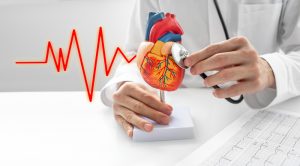According to a new study by researchers at the University of Colorado Anschutz Medical Campus, controlling the circadian rhythm through intense light and timed therapy may help prevent or treat a number of diseases of the circulatory system, including heart disease. The study was published in Circulation Research, an official journal of the American Heart Association.
Use of Intensive Light Therapy After Surgery
The effects of circadian rhythms on cardiovascular function and disease development are well known, according to the study’s lead author, Tobias Eckle, MD, PhD, professor of anesthesiology at the University of Colorado School of Medicine. However, translational preclinical studies targeting the circadian biology of the heart are just beginning to emerge, leading to the development of a new field of medicine called circadian medicine.
The lead author is Professor Tami A. Martino, PhD, Chair of Molecular and Cardiovascular Research at the University of Guelph in Ontario, Canada. The study reviews current research in the field of circadian medicine, focusing on the use of intense light therapy after surgery, the use of light to treat heart injuries, research into the differences between men and women in cardiovascular disease, and the administration of medications at specific times of day that coincide with the body’s internal clock to speed healing. She is also pushing for more aggressive use of this therapy in humans, rather than relying primarily on animal models.
Circadian Rhythms and the Cardiovascular System
The treatments are almost all low-risk. Some use light boxes, others use drugs that are already on the market. Circadian rhythms have a significant impact on the functioning of the cardiovascular system. Timing is crucial. Blood pressure and heart rate follow certain patterns that peak during the day and subside at night. When this is disrupted, it leads to poorer outcomes in cardiovascular diseases such as heart attack and heart failure. Light is crucial for maintaining the body’s balance and function. Shift workers who work at night and then during the day often have poorer cardiac outcomes.
Eckle, who has studied circadian rhythms and health for years, explains that intense light can help heal the body after heart surgery while protecting it from injury during surgery, including reducing the risk of cardiac ischemia. According to the researchers, when light hits the human eye, it is transmitted to the suprachiasmatic nucleus, a structure in the hypothalamus of the brain that regulates most circadian rhythms in the body. Intense light stabilizes the PER2 gene and increases levels of adenosine, which blocks electrical signals in the heart that cause irregular rhythms, thus protecting the heart.
Eckle has used light therapy on patients after surgery and has seen positive results, including lower troponin levels, a key protein whose elevation can signal a heart attack or stroke. With increasing evidence of the effectiveness of intensive light and timed drug treatments, Eckle says it is time to conduct further clinical trials.
Circadian rhythms play a crucial role in cardiovascular health as they influence the timing and severity of cardiovascular events and contribute to the healing process of disease. Human studies are clearly needed. Light therapy, chronotherapy and dietary restriction are low-risk strategies that should be tested sooner rather than later.







